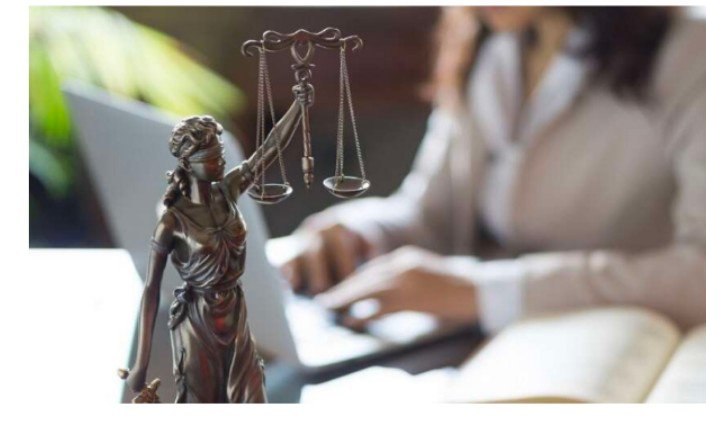
Accepting Impactful Cases Poised for Precedent Change
The first way Top supreme court lawyers influence precedents is by strategically choosing cases they argue before the supreme court. These attorneys select matters involving major splits between circuit courts or issues ripe for evolving key precedents. Perhaps a past precedent no longer reflects today’s societal realities.
Or a new perspective on constitutional text could better balance competing interests. Their goal isn’t just winning, but setting favourable new standards with nationwide effect. Accomplished practitioners adeptly identify opportunities for optimally shaping the law’s progression.
Demonstrating President’s Shortcomings
Top supreme court lawyers also show existing precedent contains internal inconsistencies, leads to unfair outcomes practically difficult to administer, or insufficiently balances competing rights and values. They highlight anomalous results sanctions by the present standard that could undermine its integrity or the law’s moral authority over time.
Demonstrating a doctrine’s operational deficits suggests its change or replacement better fulfils legal and judicial objectives. Oral advocacy tactfully raises doubts whether any legitimate governmental interest justifies maintaining the problematic status quo interpretation.
Crafting Innovative Legal Rationales
When accepted, leading advocates then develop rationales challenging or reinterpreting past precedent in new light. Through meticulous analysis of case law, history, and constitutional text/tradition, their written and oral arguments put forth sophisticated rationales for why the court should adopt transformational rulings better aligned with modern times and equitable interpretation.
Rather than rejecting the past entirely, such rationales emphasise a natural logical evolution affirming rule of law stability while allowing progressive development. Persuasive evolution often surmounts rigid adherence to possibly outdated doctrine.
Establishing Landmark Rulings Setting New Standards
In many renowned cases establishing new eras of jurisprudence, from Brown v. Board to Romer v. Evans to Obergefell v. Hodges, leading attorneys convinced at least five justices to overturn prejudicial old precedents no longer congruous with societal progress. Their policy-backed rationales advocating equal liberty and justice for marginalised communities carried the day.
Now the bedrock of constitutional understanding, these transformational rulings resulted directly from their compelling advocacy shifting precedent in an enlightened new direction for the long run. The lawyers who achieved them reshaped whole branches of law.
Building Consensus Through Principled yet Pragmatic Reasoning
Ideally, top practitioners aim not just to win 5-4 rulings but gain concurrence from a supermajority reflecting society. They reason from both principled and pragmatic viewpoints, asserting how new interpretations better align law with morality and societal ethics while promoting workable, judicially administrable standards.
Consensus arguments appeal to justice moderates by showing transformative yet moderate evolution upholding rule of law ideals, rather than upending the system. Incremental yet significant steps build bridges across ideological divides and increase precedents’ enduring influence and legitimacy over decades.
Amicus Participation Solidifying Precedents’ Rationales
Leading top supreme court lawyers also leverage amicus briefs to amplify and solidify new precedents’ policy reasoning before adoption. Amici highlights how alternative rulings benefit important stakeholder communities while alternative views threaten societal order or progress.
By bringing more sophisticated empirical and doctrinal support, their efforts help justices issue detailed majority opinions cementing transformative precedents with conceptual integrity and persuasiveness less likely to face rollback threats later. Over time, precedents gain gravitas as more interests integrate their new understandings into practice.
Setting Guiding Examples for Future Arguments
Once established, the new precedents top supreme court lawyers helped create also serve as examples guiding later advocates seeking further developments. By demonstrating constitutional and policy rationales that convinced prior majorities, subsequent attorneys refine and extend those rationales into new applications clarifying peripheral issues left unresolved.
Over decades, precedents established through skilled initial advocacy thereby evolve and expand in depth, addressing unforeseen future questions through the logical principles and interpretive methods their originating attorneys advanced. In this way, the ripple effects of top supreme court lawyers’ precedent-shaping work endure and spread throughout the law.
Grooming the Next Generation
Leading attorneys also cultivate future cohorts of top advocates able to steward the precedents they help shape. By accepting high-calibre law clerks and mentees into their chambers, these attorneys transfer invaluable hard-won insights into the subtleties, strategies, and persuasive techniques vital for protecting precedents’ integrity through the next ideological eras.
They coach protégés adopting their long-term focus on principle, pragmatism, and bipartisan consensus. Top supreme court lawyers thereby help ensure congenial precedents endure steady, well-reasoned treatment even amid changed circumstances or court compositions over multiple decades. Mentorship continues their precedent-advancing legacy into a promising future.
Leveraging Influence to File Strategic Amicus Briefs
As elder statesmen and women of the bar, top lawyers retain outsized platforms and respect even post-active advocacy. They command attention filing selective amicus briefs addressing key new questions at precedents’ fringes, nudging developments through seasoned policy perspectives.
Sometimes reminding majorities of seminal cases’ initial pragmatic yet principled intent preserves harmonious evolution. Other times, warning of threats to stability posed by drastic alternative rulings, they aim to preserve past wins’ integrity. Either way, amicus participation lets top lawyers safeguard their formative precedents’ long-term doctrinal coherence and societal benefits.
In Closure
Through exemplary initial case selection and argument, ongoing mentorship, and seasoned amicus counsel later, premier supreme court advocates exercise multidimensional influence ensuring precedents they proudly shape retain their intellectual and practical vitality enhancing justice for generations.
Their impact endures thanks to strategic focus on pragmatic principles emphasising harmonious, moderate evolution of our shared constitutional understandings over time.






